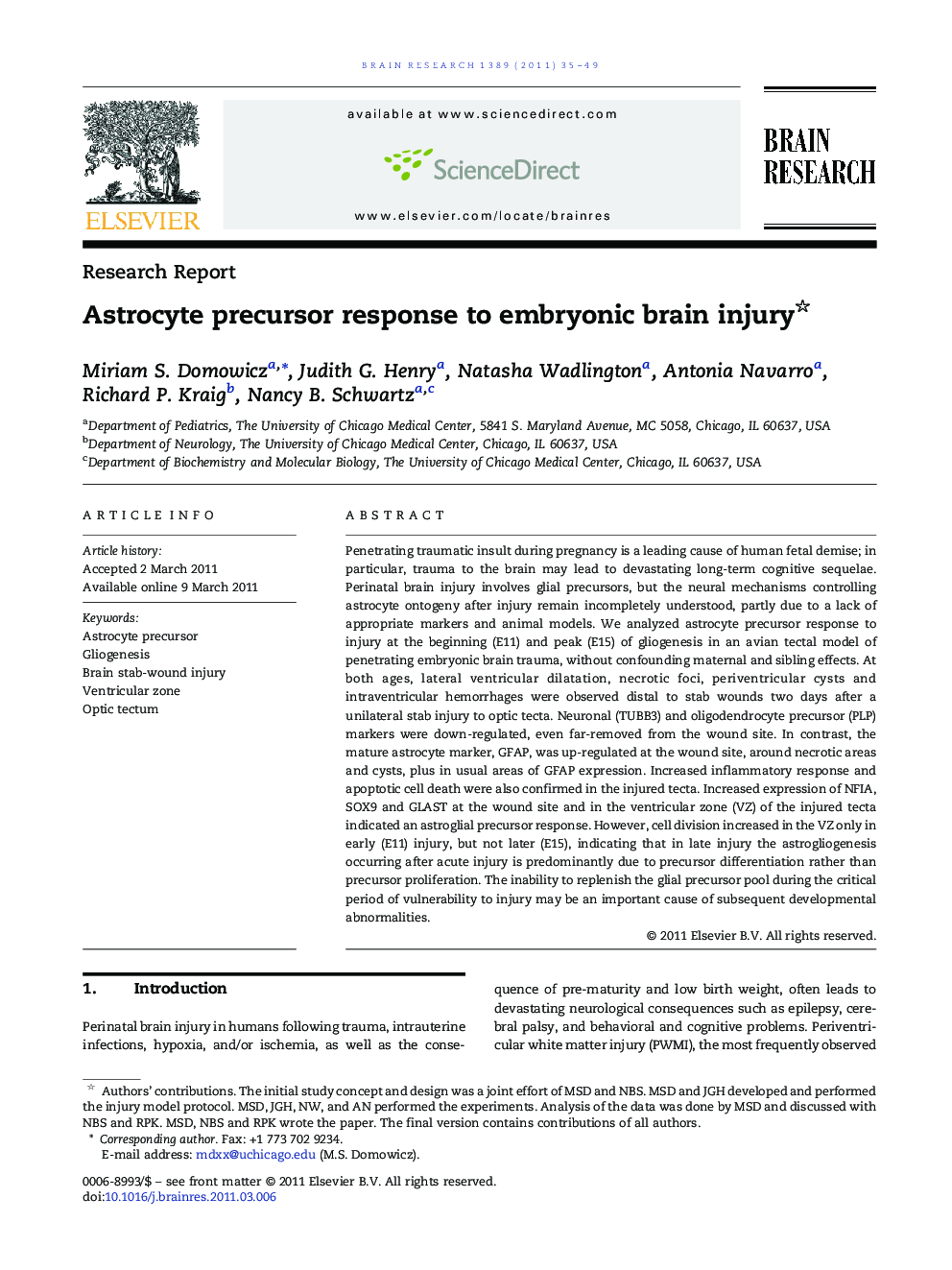| کد مقاله | کد نشریه | سال انتشار | مقاله انگلیسی | نسخه تمام متن |
|---|---|---|---|---|
| 4325969 | 1614050 | 2011 | 15 صفحه PDF | دانلود رایگان |

Penetrating traumatic insult during pregnancy is a leading cause of human fetal demise; in particular, trauma to the brain may lead to devastating long-term cognitive sequelae. Perinatal brain injury involves glial precursors, but the neural mechanisms controlling astrocyte ontogeny after injury remain incompletely understood, partly due to a lack of appropriate markers and animal models. We analyzed astrocyte precursor response to injury at the beginning (E11) and peak (E15) of gliogenesis in an avian tectal model of penetrating embryonic brain trauma, without confounding maternal and sibling effects. At both ages, lateral ventricular dilatation, necrotic foci, periventricular cysts and intraventricular hemorrhages were observed distal to stab wounds two days after a unilateral stab injury to optic tecta. Neuronal (TUBB3) and oligodendrocyte precursor (PLP) markers were down-regulated, even far-removed from the wound site. In contrast, the mature astrocyte marker, GFAP, was up-regulated at the wound site, around necrotic areas and cysts, plus in usual areas of GFAP expression. Increased inflammatory response and apoptotic cell death were also confirmed in the injured tecta. Increased expression of NFIA, SOX9 and GLAST at the wound site and in the ventricular zone (VZ) of the injured tecta indicated an astroglial precursor response. However, cell division increased in the VZ only in early (E11) injury, but not later (E15), indicating that in late injury the astrogliogenesis occurring after acute injury is predominantly due to precursor differentiation rather than precursor proliferation. The inability to replenish the glial precursor pool during the critical period of vulnerability to injury may be an important cause of subsequent developmental abnormalities.
Research highlights
► Embryonic brain stab-injury elicited early upregulation of GFAP mRNA in the ventricular zone and causes extensive neuronal damage.
► Increased expression of transcription factors expressed by astrocytic precursors was observed in the VZ of the stab-injury side.
► Embryonic brain stab-injury triggered widespread pro-inflammatory changes.
► Significant astrogliogenesis occurred in response to acute injury; predominantly the result of increased precursor differentiation.
Journal: Brain Research - Volume 1389, 10 May 2011, Pages 35–49